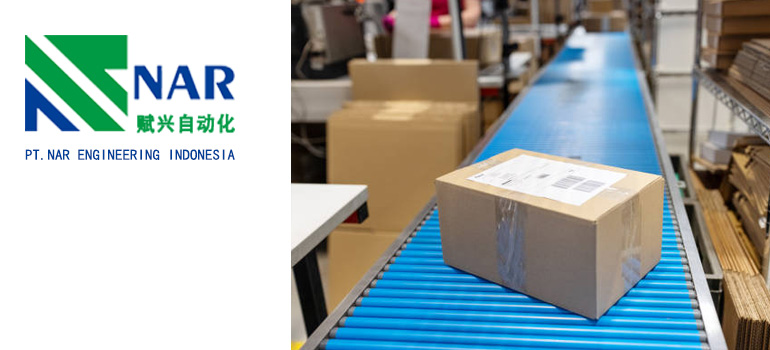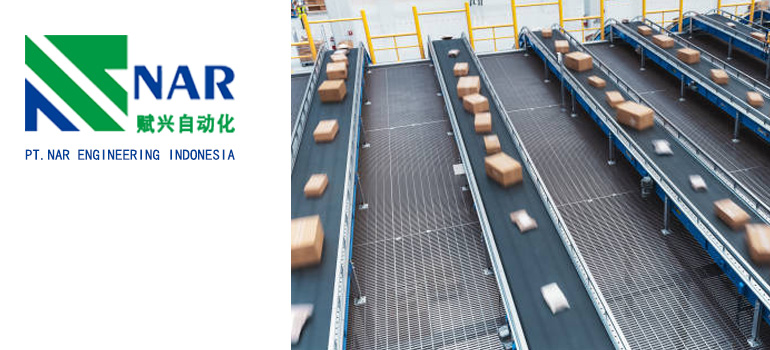Summary:
Conveyor Belt Parts: Essential Components for Efficiency
What Are Conveyor Belt Parts
Importance of Understanding Conveyor Belt Parts
Essential Components of Conveyor Belt Parts
Functions and Roles of Conveyor Belt Parts
Conveyor belt systems are integral to various industries, facilitating the seamless movement of goods and materials across different stages of production and distribution. Understanding the intricate details of conveyor belt parts is crucial for optimizing operational efficiency and ensuring smooth workflow in manufacturing plants, warehouses, and logistics centers.
What Are Conveyor Belt Parts?
Conveyor belt parts refer to the various components that make up a conveyor belt system, which is used to transport goods and materials from one point to another in industries such as manufacturing, logistics, and distribution.
Components of Conveyor Belt Parts:
Frame and Structure:
The frame provides the structure and support for the conveyor belt system.
It ensures stability and alignment of the conveyor components.
Materials commonly used include steel, aluminum, or composite materials depending on the application.
Belt Material:
The conveyor belt itself is a crucial component made of various materials such as rubber, PVC, nylon, or metal.
Belt materials are selected based on factors like load capacity, durability, flexibility, and the type of material being transported.
Belts may have different surface textures, coatings, and profiles depending on the specific application requirements.
Pulleys and Rollers:
Pulleys are cylindrical drums around which the conveyor belt rotates.
They help to change the direction of the belt and provide tension to ensure proper operation.
Rollers support the belt and facilitate its movement along the conveyor path.
They can be made of steel, plastic, or other materials and are designed to reduce friction and support heavy loads.
Bearings and Seals:
Bearings are essential components within pulleys and rollers that allow them to rotate smoothly.
They are often sealed to protect against contaminants and reduce maintenance requirements.
Proper lubrication and maintenance of bearings are crucial for extending the life of conveyor systems.
Skirting and Scrapers:
Skirting is used to seal the edges of the conveyor belt to prevent material spillage and reduce cleanup efforts.
Scrapers are installed along the belt to remove residual material, enhancing cleanliness and preventing buildup that can affect conveyor performance.
Tracking Systems:
Tracking systems help to keep the conveyor belt aligned and centered on the conveyor frame.
They may include sensors, guides, or mechanical adjustments to ensure the belt runs straight and avoids misalignment.
Proper tracking enhances operational efficiency and reduces wear on belt edges and components.
Understanding these conveyor belt parts is essential for designing, maintaining, and optimizing conveyor systems to meet specific operational requirements and industry standards. Each component plays a critical role in ensuring the reliable and efficient transportation of goods and materials within industrial settings.
Importance of Understanding Conveyor Belt Parts

Understanding conveyor belt parts is crucial for several reasons, each contributing to the overall efficiency, reliability, and safety of conveyor systems in various industries. Here are the key reasons why understanding these parts is important:
Optimal Performance and Efficiency
Proper knowledge of conveyor belt parts allows for the selection of components that best suit the specific operational requirements. Components such as belt materials, pulleys, rollers, and bearings directly impact the efficiency and performance of the conveyor system. For instance, choosing the right belt material based on factors like load capacity and material type being transported ensures smooth operation and minimal downtime. Likewise, well-maintained pulleys and rollers reduce friction, thereby enhancing energy efficiency and reducing operational costs.
Maintenance and Reliability
Understanding conveyor belt parts enables effective maintenance practices. Regular inspection, lubrication, and replacement of worn components such as bearings and seals help prevent unexpected breakdowns and extend the lifespan of the conveyor system. Properly maintained belts and components reduce the risk of costly repairs and downtime, ensuring continuous operation and meeting production deadlines.
Safety and Compliance
Certain conveyor belt parts, such as safety guards, emergency stop switches, and protective skirting, contribute to the overall safety of the system. Understanding their role and proper installation ensures compliance with safety regulations and standards, protecting operators and workers from accidents and injuries. Properly designed and maintained conveyor systems also contribute to a safer work environment by reducing hazards associated with material handling.
Adaptability and Innovation
As industries evolve, understanding conveyor belt parts allows for the integration of new technologies and innovations. Components like tracking systems and automated controls improve system adaptability, allowing for smoother integration with other automated processes. Knowledge of advanced materials and technologies in conveyor belt components enables industries to stay competitive and responsive to changing market demands.
Cost Efficiency
Investing in quality conveyor belt parts and understanding their functionality leads to long-term cost savings. By selecting durable materials and components that require less frequent replacement and maintenance, industries can reduce overall operating costs. Additionally, optimizing conveyor system performance through proper component selection and maintenance improves energy efficiency, further contributing to cost savings and sustainability.
In conclusion, understanding conveyor belt parts is essential for optimizing performance, ensuring safety and compliance, fostering innovation, and achieving cost efficiency in industrial operations. It enables industries to maintain competitive advantage and meet operational goals while promoting a safe and productive work environment.
Essential Components of Conveyor Belt Parts
The essential components of conveyor belt systems encompass a variety of parts that work together to facilitate the smooth and efficient movement of materials across different industries. Here’s a detailed overview of these components:
Belt Material
Purpose: The conveyor belt itself is a crucial component, responsible for carrying the load and ensuring efficient material transport.
Types: Materials vary based on application needs, such as rubber, PVC, nylon, or metal, each offering specific characteristics like durability, flexibility, and resistance to abrasion or chemicals.
Features: Surface textures, coatings, and profiles can be customized to enhance grip, reduce slipping, or accommodate specific material handling requirements.
Pulleys and Rollers
Function: Pulleys are cylindrical drums around which the conveyor belt rotates, changing its direction and providing tension.
Types: Drive pulleys transmit power to the belt, while idler pulleys support the belt and reduce friction.
Rollers: Support the belt and facilitate its movement along the conveyor path, available in various materials (steel, plastic) depending on load and environmental conditions.
Frame and Structure
Support: Provides the foundational structure for the conveyor system, ensuring stability and alignment of components.
Materials: Typically constructed from steel, aluminum, or composite materials, chosen for strength and durability.
Design Considerations: Frame design influences conveyor layout, load capacity, and ease of maintenance, tailored to specific operational requirements.
Bearings and Seals
Role: Bearings enable smooth rotation of pulleys and rollers, reducing friction and wear.
Types: Sealed bearings protect against contaminants and require less maintenance, crucial for prolonged system reliability.
Maintenance: Regular lubrication and inspection ensure optimal bearing performance and extend component lifespan.
Skirting and Scrapers
Skirting: Installed along the conveyor edges to contain material spillage and prevent dust emissions.
Scrapers: Remove residual material from the belt surface, improving cleanliness and preventing buildup that can affect conveyor performance.
Types: Skirting and scrapers vary in material and design based on application needs, such as polyurethane for abrasion resistance or tungsten for heavy-duty applications.
Tracking Systems
Function: Maintain proper alignment and centering of the conveyor belt, preventing misalignment and reducing edge wear.
Components: Sensors, guides, or mechanical adjustments detect and correct belt deviations, ensuring smooth operation.
Benefits: Enhance operational efficiency, reduce maintenance costs, and extend belt and component lifespan by minimizing stress and wear.
Understanding these essential components of conveyor belt systems is critical for designing, maintaining, and optimizing conveyor systems tailored to specific industry needs. Each component plays a crucial role in ensuring reliable and efficient material handling, contributing to overall operational productivity and safety.
Functions and Roles of Conveyor Belt Parts
Conveyor belt parts serve various functions and play essential roles in ensuring the smooth and efficient operation of conveyor systems across different industries. Here’s an in-depth look at the functions and roles of key conveyor belt components:
Belt Material
Function: The conveyor belt itself carries and transports materials from one point to another along the conveyor system.
Role: It provides a stable surface for conveying goods, ensuring smooth movement and reducing friction between the material and the conveyor components.
Characteristics: Different belt materials (rubber, PVC, nylon, etc.) offer varying degrees of durability, flexibility, and resistance to abrasion and chemicals, tailored to specific operational requirements.
Pulleys and Rollers
Function: Pulleys and rollers support and guide the conveyor belt, facilitating its movement and changing its direction as required.
Role: Drive pulleys transmit power to the belt, while idler pulleys support the belt and reduce friction.
Types: Various types include head, tail, snub, and bend pulleys, each serving specific functions in maintaining belt tension and alignment.
Bearings and Seals
Function: Bearings allow for smooth rotation of pulleys and rollers, reducing friction and wear.
Role: They support the weight of rotating components, such as pulleys and rollers, ensuring efficient operation and minimal energy loss.
Types: Sealed bearings protect against contaminants and require less maintenance, contributing to extended component lifespan and reduced downtime.
Skirting and Scrapers
Function: Skirting prevents material spillage and dust emissions by sealing the edges of the conveyor belt.
Role: It maintains a clean working environment and reduces cleanup efforts, enhancing overall operational cleanliness and safety.
Scrapers: Remove residual material from the belt surface, preventing buildup that can affect conveyor performance and cause tracking issues.
Tracking Systems
Function: Tracking systems maintain proper alignment and centering of the conveyor belt within the frame.
Role: They prevent belt misalignment and reduce edge wear, ensuring smooth and efficient operation.
Components: Include sensors, guides, or mechanical adjustments that detect and correct belt deviations, optimizing conveyor performance and minimizing maintenance requirements.
Frame and Structure
Function: The frame provides structural support for the entire conveyor system, ensuring stability and alignment of conveyor belt components.
Role: It maintains the integrity of the conveyor system under varying loads and environmental conditions, supporting efficient material handling and reducing wear on components.
Materials: Steel, aluminum, or composite materials are commonly used for frames, chosen for their strength, durability, and suitability for specific application requirements.
Understanding the functions and roles of conveyor belt part is crucial for designing, maintaining, and optimizing conveyor systems tailored to the unique needs of industries such as manufacturing, logistics, and mining. Each component contributes to overall system efficiency, reliability, and safety, ensuring continuous operation and meeting production targets effectively.

